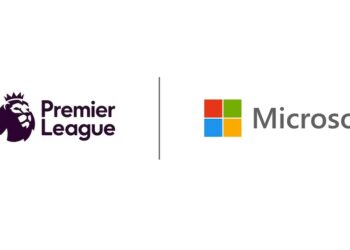It may surprise that most burglars gain access to victims’ homes by walking through the front door. This is because every home has one, often left unlocked. For many years, Microsoft Office documents have been our digital front doors. Almost all of us will have used Office docs at some point, be it Word, PowerPoint, or Excel, and every day thousands of emails are exchanged with these documents attached. Most of the time, we don’t even question their source, making them a wide-open door.
Over 70% of the malicious files in India were delivered via email in the last 30 days, according to Check Point’s Intelligence Report on India, the top malware in India is Emotet, an advanced, self-propagating, modular Trojan that distributes other malware or malicious campaigns. It can be spread via phishing spam emails containing malicious attachments or links. With the growing sophistication of this new malware within emails, such phishing attacks will just escalate.
The malicious use of Microsoft docs occurs so frequently that they even have their name – maldocs – and one of the main techniques cybercriminals use to create them involves the abuse of Office macros.
Thankfully, Microsoft has now started the process to block macros by default, but it took a while to get there.
With its widespread reach, such email infection chains were also highlighted as one of the critical cybersecurity risk predictions in Check Point’s 2022 Cyber Attacks Mid-Year Report. So, what do these email infection chains mean for your business? Is worrying about suspicious attachments a thing of the past? Let’s look at how email infection chains are diversifying in 2022.
The long-standing problem with macros
Office macros are special purpose programs that cybercriminals have used to deliver malware via email attachments for years. Security firms have been fighting the practice for years, but it was always clear that the key to preventing macro abuse lay in the hands of Microsoft itself. Indeed, in February this year, Microsoft announced it would change Office default settings to disable macros – only to roll back on that decision in July and then to tell that the process will continue as planned.
Although proof of concept (PoC) and active exploits using VBA macros appeared as early as 1995, they lacked info-stealing functionality and were mostly used for pranks. These types of attacks died out in 2010 when Microsoft introduced “protected view” – a yellow ribbon warning users not to enable macros’ functionality. However, the use of macros was re-introduced when threat actors realized that, with a bit of social engineering, they could convince users to enable macros and then use them to download and execute other binary files.
Although Microsoft acknowledged the issue multiple times, the malicious use of Office macros and vulnerabilities has increased in popularity over the years. By January 2022, our analysis found that as much as 61% percent of all malicious payloads attached to emails sent to our clients were various document types such as xlsx, xlsm, docx, doc, ppt, and others. Check Point ThreatCloud latest figures show that Excel files alone make up 49% of all malicious files received by email.
Typically, a carefully socially engineered email carrying an Excel file with a malicious macro is the weapon of choice for unsophisticated actors and top-notch APT groups.
Cybercriminals getting creative
After announcing its intention to block VBA macros on Office docs in February, an unexpected twist to the plot came in early July, when Microsoft reversed its decision. Replying to a user complaint, a Microsoft representative admitted that they had rolled back on the decision “based on feedback”.
Microsoft faced a massive backlash from users and has since resumed the rollout of VBA macro blocking, explaining that the July pullback was only temporary.
Against this backdrop, threat actors have begun exploring alternatives for non-executable malicious email chains, which mostly start with different types of archive file like .ZIP and . RAR. In many cases, those archive files are password protected, with the password written in the body of the email. These archive files mainly include the malicious file, or in some cases, have an additional benign file that leads to the malicious file.
In April, Emotet was reported to be emailing OneDrive URL links of zip files containing malicious xll files. These xll files are .dll libraries designed for Excel, and threat actors typically use an exported xlAutoOpen function to download and run malicious payloads. Various tools and services, such as Excel-DNA, are already available to build .xll downloaders.
Another type of archive file that became a common alternative to maldocs is the use of ISO archives, which bypass the Mark-of-the-Web security mechanism. Together with a combination of .hta payload, they can look like legitimate documents but run malicious code in the background. For example, bumblebee, a malware loader detected in February, delivers various payloads that often result in ransomware attacks and is reported to involve .iso files delivered via email initially.
In June, we also reported that Snake Keylogger’s malware had returned to our monthly global threat index after a long absence. Previously, the malware had generally been spread via emails that included docx or xlsx attachments with malicious macros; however, its return to the index was a result of it being distributed via PDF files – possibly due in part to Microsoft’s announcement.
So, although internet macros will now be blocked by default, cybercriminals are continuing to evolve their tactics, becoming more creative with new file types, just as we’ve found with Emotet, Bumblebee, and Snake. Using different archive files is such a success for cybercriminals, as most people do not view those files as potentially malicious and trust the files inside the archives as those do not come directly from the web. Looking ahead, we can only expect more sophisticated malware families to accelerate the development of new infection chains, with different file types that are password protected to avoid detection, as advanced social engineering attacks increase.
It has never been more important for your employees to understand social engineering risks and how to identify an attack. Cybercriminals will often send a simple email that does not contain any malware but impersonates someone you know just to get into a conversation with you. Then, after gaining your trust, the malicious file will be sent. And remember, it may no longer be an Office document or .exe file but another file type such as a .iso or PDF or infection chains that combine different file types. This user education is one of the most essential parts of an effective cybersecurity strategy, but it may also be wise to have a robust email security solution in place that quarantines and inspects attachments, preventing any malicious file from entering the network in the first place.
As a means of protection, organizations should also consider blocking these macros via a site-wide security policy that combines file sanitization and advanced Sandbox emulation. This is primarily an excellent tool for detecting these download-and-execute macro documents early. Alternatively, another defense mechanism could include examining incoming documents and deleting out the macros before they ever reach the targeted user. These capabilities, including protecting against the majority of file types received in addition to office files, are available in Check Point’s Threat Emulation and Threat Extraction products combined in one key offering, Check Point Sandblast.
Threat Extraction promptly delivers safe, sanitized content to its intended destination. It ensures productivity, emulating archive files discussed earlier, while SandBlast Threat Emulation sandboxing performs a deep analysis of the file and determines whether it was malicious. The end user can access the original file if it is not classified as malicious. Check Point continues innovating by enabling this critical capability on the gateway. Therefore, files downloaded from the web or sent in the email are extracted and cleaned before they reach the user, creating a safer environment for your emails.























